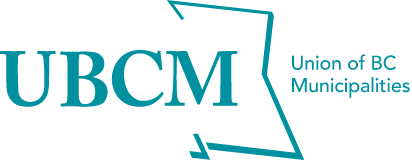Whereas British Columbias new BC Zero Carbon Step Code effective May 1, 2023 and Clean BC Roadmap to 2030 will accelerate the uptake of electric vehicles, heat pumps and other technologies that will increase the demand for clean electricity; And whereas BC Hydros Five-Year Electrification Plan, released by the government in September of 2021, estimates that it has sufficient supply of clean electricity, including from Site C dam, only to 2030, leading government to announce plans to call for new utility-scale sources of renewable, emission-free electricity in BC; And whereas the BC Government in the past has incentivized the development of clean renewable energy through advantageous feed-in tariffs, such as for Independent Hydro-Electric Power Producers: Therefore be it resolved that UBCM urge the BC Government to require that BC Hydro increase the price they will pay for the municipal, First Nations and private production of renewable energy, including solar, wind, geothermal energy, sufficient to stimulate the increased investment and production at all scalesincluding household and municipalneeded to tackle the climate emergency, while also ensuring reasonable energy affordability and that natural environments are protected.
Ministry of Energy, Mines and Low Carbon Innovation Government is working with BC Hydro, through the BC Hydro Task Force, to accelerate the planning and procurement of new electricity infrastructure while keeping rates affordable and advancing Indigenous ownership opportunities in future electricity generation and transmission investments. BC Hydro has submitted its Integrated Resource Plan IRP to the BC UtilitiesCommission BCUC. The IRP looks at future energy needs over a 20-year period, and explores the resources required to meet them. The IRP is currently before the BCUC, which will make its decision at the conclusion of a public process. On June 15, 2023, BC Hydro filed an update to its IRP with the BCUC. Jointly, the Province and BC Hydro announced that BC Hydro would need to procure 3,000 Gigawatt hours per year of electricity as early as 2028. Since June 2023, BC Hydro has engaged with First Nations, local governments, independent power producers, and other stakeholders on the elements of a Call for Power to meet forecast growth in electricity demand. To ensure that the energy procured through the call is cost-effective while adequate to meet BC Hydros needs, it will be purchased through a competitive bidding process rather than a fixed price offer. BC Hydros energy purchase agreements are also subject to the approval of the BCUC as an additional measure to ensure that they are cost-effective and rates are kept affordable.
BC Hydro When deciding on the price we pay to customers of renewable energy, we need to consider the impact on all ratepayers as we have a commitment to keep rates low for our customers. BC Hydro has some of the lowest rates in North America and operating in the best interest of ratepayers will help ensure our rates remain among the lowest. Electrification is a key pathway to achieving the CleanBC emission reduction targets - and we continue to see significant interest from the residential, commercial, transportation and industrial sectors in making the switch from fossil fuels to clean electricity. We are forecasting that we will need new clean or renewable resources starting as early as the end of 2028. As a result, we are planning to acquire clean or renewable energy from new resources through a competitive acquisition process. We expect to issue a Call for Power in spring 2024. We are looking for no larger than 200 MW projects and we are considering setting a minimum project size between 30 and 50 MW. We have seen costs for renewables come down over the past decade but recognize there are currently upward pressures on those prices, due to supply chain issues, inflation, and interest rates. We dont have a price we are seeking specifically. We are looking to the market to understand what their needed return is for a particular project and bid in their best price. Work is already underway, and we have spent the last few months engaging with First Nations, Independent Power Producers and other stakeholders including local government on key elements of the call and our overall approach.
